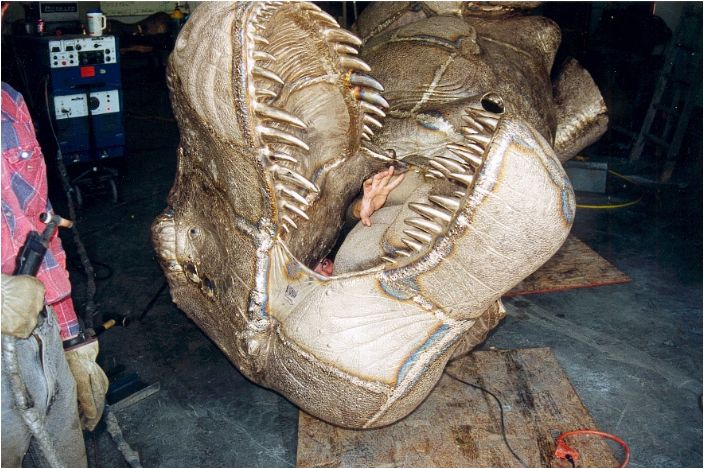Posts: 52 Location: West coast USA
Thu 18 Dec, 2003 12:24 am
Re: Bronze and steel hilt furniture
Wow 3% that is pretty low. The Hollow sculptures I worked on were extremely large. When casting a hollow cylinder the circumference shrinks more percentage wise than a solid does so legs arms and torsos shrink more in girth than in length. It leads to tall guant sculptures if not accounted for in the modeling stage. On the smaller end of things I have done jewerly and fittings wax work. If size is specific on smaller part one has to not only consider the metal shinkage, but the Mold shrinkage and injection material shrinkage aswell. I would imagine that your numbers cover overall process shrinkage. Its amazing what modern process can achieve.
I wish it was that accurate in a Sculpture foundry it would save alot of assembly time. Large Sculpture are poured in plates that get assembled like a puzzle. every bit of distortion causes extra hours of hammering bending cutting and chaseing. Somtimes the plates would be as large as 2x4 feet.
As far as my expirience at carving waxes go its nothing special I just use a variety of files and scrapers and a nice pair of dividers for layout. I have a Kerr wax pen with a foot pedal switch for sprueing and correcting messups. I like Kerr Blue for carving and I also use Kerr Aqua injection wax for certain types of detail like dragon scales since it pushes well with a tool but is still firm enough to be handled. I also like to work with Super sculpy for small sculptural items since it has some unique properties including the ability to be hardened. If your makeing a mold anyway it has advantages over wax in a variety of ways. these days I dont have much time for wax work since I have been working direct for my Japanese style fittings which take most of time.
 Attachment: 89.44 KB
Attachment: 89.44 KB

About 6000 pounds of cast bronze and welded Steel super structure.
